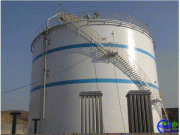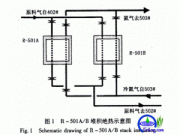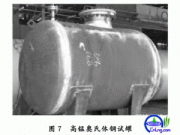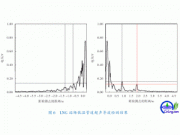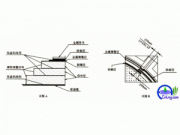ABSOLUTE PRESSURE
Gauge pressure plus atmospheric pressure.
ASSOCIATED GAS
See Appendix C.
ATMOSPHERIC PRESSURE
The pressure of the weight of air and water vapour on the surface of the earth. Approximately 14.7 lbf/in2 at sea level.
BLUE WATER GAS
Also called "water gas". Made in a cyclic process in which an incandescent bed of coke or coal is alternately subjected to blasts of air and steam. The gas consists mainly of equal proportions of carbon monoxide and hydrogen and has a gross heat content of about 300 Btu/ft3. (see also Carburetted Water Gas.)
BURNER CAPACITY
The maximum Btu per hour that can be released by a burner while burning with a stable flame.
CALORIMETER
An instrument for determining the heating value of a fuel.
CARBURETTED WATER GAS
(Carburetted Blue Gas) The gas resulting from the enrichment of blue water gas during its manufacture by a simultaneous process of light distillate, gas oil or fuel oil gasification. The gas has a gross heat content of about 500 to 550 BtU/ft3.
CITY GATE
A measuring station, which may also include pressure regulation, at which a distributing gas utility receives gas from a natural gas pipeline company or the transmission System.
COAL GAS or COKE OVEN GAS
A manufactured gas made by destructive distillation ("carbonisation") of bituminous coal in a gas retort or by-product coke oven. Its chief components are methane (20 to 30 per cent) and hydrogen (about 50 percent). This gas generally has a gross heating value of 500 to 550 Btu /ft3. When the process takes place in a closed oven (with gas as a by-product of coke production) it is generally designated as "Coke Oven Gas", and when produced in retorts it is called "Coal Gas".
COMMODITY CHARGE
That portion of the charge or rate based upon the total volume of gas consumed or billed.
CONDENSATE
A liquid/hydrocarbon mixture of 45 to 65 degrees A.P.l. gravity, which may be recovered at the surface from some non-associated gas reservoirs.
CONNECTION CHARGE
An amount to be paid by the customer in a lump sum, or in instalments, for connecting the customer’s facilities to the supplier’s facilities.
CONTRACT DEMAND
The volume that the supplier of gas service agrees to deliver and, in general, the amount that the customer agrees to take or pay for.
CUBIC FOOT AND CUBIC METER (GAS)
Common units of measurement of gas volume. They are the amounts of gas required to fill a volume of one cubic meter under started conditions of temperature, pressure and water vapour content. and Appendix G.
CUSTOMER CHARGE
A fixed amount to be paid periodically by the customer without regard to demand or commodity consumption.
CYCLING or RECYLING
The process by which a non-associated gas reservoir is produced only for the recovery of condensate. The gas, after removal of the condensate, is re-injected into the formation.
DAILY AVERAGE SEND-OUT
The total volume of gas delivered during a period of time divided by number of days in the period.
DAILY PEAK
The maximum volume of gas delivered in any one day during a given period, usually a calendar year.
DEGREE DAY
A measure of the extent to which the mean daily temperature, falls below an assumed base, say 65oF. Thus each degree by which the mean temperature for any day is loss than 65oF would represent one degree day. (In Continental Europe, oC are used instead of oF and the assumed base temperature is generally taken as 16oC, equivalent to 60.8oF).
DEMAND (LOAD)
Rate of flow of gas In a specified time Interval, usually expressed in cubic feet (or cubic metres) per hour, per day or per year.
DEMAND CHARGE
That portion of the charge or rate for gas service based upon the customer's demand characteristics.
DISTRIBUTION COMPANY or GAS UTILITY
A company which obtains the major portion of its gas operating revenues from the operation of a retail gas distribution system and which operates no transportation system other than incidental connections to a transportation system of another company. For purposes of American Gas Association (A.G.A.) statistics, a distribution company obtains at least 95 per cent of its gas operating revenue from the operation of its retail gas distribution system. (See also Transmission Company.)
DISTRIBUTION SYSTEM
Feeders, mains, services and equipment which carry or control the supply of gas from the point or points of local supply (usually the city gate station) to and including the consumer meters.
DIVERSITY FACTOR
The ratio of the sum of the non-coincident maximum demands of two or more loads to their coincident maximum demand for the same period.
FLAT RATE SCHEDULE
A rate schedule that provides for a specified charge irrespective of the quantity of gas used or the demand.
GAUGE PRESSURE
The pressure generally shown by measuring devices. This is the pressure in excess of that exerted by the atmosphere. (See Absolute Pressure.)
GROSS CALORIFIC (HEATING) VALUE
The gross calorific value at constant pressure of a gaseous fuel is the number of heat units produced when unit volume of the fuel, measured under standard conditions, is burned in excess air in such a way that the materials after corn- bustion consist of the gases carbon dioxide, sulphur dioxide, oxygen and nitrogen, water vapour equal in quantity to that in the gaseous fuel and the air before combustion arid liquid water equal in quantity to that produced during combustion, and that the pressure and temperature of the gaseous fuel, the air and the materials after combustion are one standard atmosphere and 25oC (British Standard definition)
INCH OF MERCURY
A unit of pressure (equivalent to 0.491154 lbflin2) by which one pound per square Inch equals 2.036009 Inches of mercury column at 0oC.(See also Table 5).
INCH OF WATER
A unit of pressure (equivalent to 0.03613 lbf/in2) by which one pound per square inch equals 27.6M9 inches of water column at 4oC.(See also Table 5).
INTERRUPTIBLE GAS
Gas made available under agreements, which permit curtailment or cessation of delivery by the supplier.
LINE PACK
A method of peak-shaving by withdrawing gas from a section of a pipeline system in excess of the input into that section, i.e. normally the difference between the actual volume of gas in the pipeline at low flow (increased pressure) and that at normal flow.
LIQUEFIED NATURAL GAS (LNG)
Natural gas that has been liquefied by cooling to minus 258oF (-161oC) at atmospheric pressure.
LIQUEFIED PETROLEUM GAS (LPG)
Any hydrocarbon mixture in either the liquid or gaseous state the chief components of which consist of propane, propylene, butane, iso-butane, butylene or mixtures there- of in any ratio. See Appendix H.
LOAD CURVE
A graph in which the send-our of a gas system, or segment of a system, is plotted against Intervals of time.
LOAD DENSITY
The concentration of gas load for a given area expressed as gas volume per unit of time and per unit of area.
LOAD DURATION CURVE
A curve of loads, plotted in descending order of magnitude, against time intervals for a specified period. The co-ordinates may be absolute quantities or percentages.
LOAD FACTOR
The ratio of the average load over a designated period to the peak load occurring in that period. Usually expressed as a percentage.
LOW PRESSURE GAS DISTRIBUTION SYSTEM
A gas distribution system, or the mains of a segment of a distribution system, operated at low pressures of less than 15 inches water column.
LPG-AIR MIXTURES
Mixtures of liquefied petroleum gas and air to obtain a desired heating value and capable of being distributed through a distribution system also used for stand-by and peak-shaving purposes by gas utilities.
INCH OF MERCURY
A unit of pressure (equivalent to 0.491154 lbflin2) by which one pound per square Inch equals 2.036009 Inches of mercury column at 0oC.(See also Table 5).
INCH OF WATER
A unit of pressure (equivalent to 0.03613 lbf/in2) by which one pound per square inch equals 27.6M9 inches of water column at 4oC.(See also Table 5).
INTERRUPTIBLE GAS
Gas made available under agreements, which permit curtailment or cessation of delivery by the supplier.
LINE PACK
A method of peak-shaving by withdrawing gas from a section of a pipeline system in excess of the input into that section, i.e. normally the difference between the actual volume of gas in the pipeline at low flow (increased pressure) and that at normal flow.
LIQUEFIED NATURAL GAS (LNG)
Natural gas that has been liquefied by cooling to minus 258oF (-161oC) at atmospheric pressure.
LIQUEFIED PETROLEUM GAS (LPG)
Any hydrocarbon mixture in either the liquid or gaseous state the chief components of which consist of propane, propylene, butane, iso-butane, butylene or mixtures there- of in any ratio. See Appendix H.
LOAD CURVE
A graph in which the send-our of a gas system, or segment of a system, is plotted against Intervals of time.
LOAD DENSITY
The concentration of gas load for a given area expressed as gas volume per unit of time and per unit of area.
LOAD DURATION CURVE
A curve of loads, plotted in descending order of magnitude, against time intervals for a specified period. The co-ordinates may be absolute quantities or percentages.
LOAD FACTOR
The ratio of the average load over a designated period to the peak load occurring in that period. Usually expressed as a percentage.
LOW PRESSURE GAS DISTRIBUTION SYSTEM
A gas distribution system, or the mains of a segment of a distribution system, operated at low pressures of less than 15 inches water column.
LPG-AIR MIXTURES
Mixtures of liquefied petroleum gas and air to obtain a desired heating value and capable of being distributed through a distribution system also used for stand-by and peak-shaving purposes by gas utilities.
MANUFACTURED GAS
Combustible gases derived from primary energy sources by processes involving chemical reaction. For instance, gas produced from coal, coke or liquid hydrocarbons.
METER (GAS)
A mechanical device for automatically measuring quantities of gas. Some of the more important types are:
DIAPHRAGM METER
A gas meter in which the passage of gas through two or more chambers moves diaphragms which are geared to a volume- indicating dial. Sizes up to 20,000 cubic feet per hour and 1,000 lbf/in2 working pressure are available.
MASS FLOWMETER
A type of meter in which the gas flow is measured in terms of mass by utilising the velocity and density of the gas stream to calculate the mass of a gas flowing in unit time. This type of meter is at present in an advanced stage of development.
ORIFICE METER
For measuring the flow of fluid through a pipe or duct by measurement of the pressure differential across a plate having a precision machined hole in its center. Ratings up to very high throughputs and pressure are available.
ROTARY DISPLACEMENT METER
The positive-pressure blower principle in reverse is used in this meter in which gas pressure turns twin matching impellers and the quantity of gas passing through is proportional to the number of revolutions. These meters are made in the range of 3,000 to 1,000,000 cubic feet per hour and for pressures up to 1,200 lbf/in2.
TURBINE FLOWMETER
A type of meter in which there is a turbine wheel or rotor made to rotate by the flowing gas. The rate or speed at which the turbine wheel revolves is a measure of the velocity of the gas.
VENTURI METER
A meter in which the flow is determined by measuring the pressure drop caused by the flow through a Venturi throat, The flow rate is proportional to the square root of the pressure drop across the throat.
MINIMUM CHARGE
A clause which provides that the charge for a prescribed period shall not be less than a specified amount.
NATURAL GASOLINE
Those liquid hydrocarbon mixtures containing essentially pentanes and heavier hydrocarbons which have been extracted from natural gas. See Appendix H
NET CALORIFIC (HEATING) VALUE
The net calorific value at constant pressure of a gaseous fuel is the number of heat units produced when unit volume of the fuel, measured under standard conditions, is burned in excess air in such a way that the materials after combustion consist of the gases carbon dioxide, sulphur dioxide, oxygen, nitrogen and water vapour, and that the pressure and temperature of the gaseous fuel, the air and the materials after combustion are one standard atmosphere and 25oC. This value is derived from the measured gross figure.
NON-ASSOCIATED GAS
(Also called "unassociated gas") See Appendix C.
OFF-PEAK
The period during a day, week, month or year when the load being delivered by a gas system is not at or near the maximum volume deliverable by that system.
PEAK or PEAK LOAD
The maximum load consumed or produced by a unit or group of units in a stated period of time.
PEAK SHAVING
The practice of augmenting the normal supply of gas during peak or emergency periods from another source where gas may have either been stored during periods of low demand, or manufactured specifically to meet the peak demand.
PRESSURE GAS
A gas manufactured by burning coat or coke with a regulated deficiency of air, normally saturated with steam. The principal combustible component is carbon monoxide (about 30%) and the gross beat content is between 120 and 160 Btu/ft3.
PRESSURE MAINTENANCE
(Repressing). A Process in which natural gas is injected into a formation capable of producing crude petroleum to aid in maintaining pressure in an underground reservoir for the purpose of assisting in the recovery of crude.
PRODUCER GAS
A Gas manufactured by burning coal or coke with a regulated deficiency of air, normally saturated with stream. The principal combustible component is carbon monoxide (about 30%) and the gross heat content is between 120 and 160 btu/ft3 .
RECYCLING
See "Cycling".
REFORMING
The process of thermal or catalytic cracking of natural gas, liquefied petroleum gas, refinery gas or gas tram Oil, resulting in the production of a gas having a different chemical composition.
REFINERY GAS
A gas resulting from oil refinery operations consisting mainly of hydrogen, methane, ethylene, propylene and the butylenes. Other gases such as nitrogen and carbon dioxide may also be present. The composition can be highly variable and the beat content can range from 1,000 to 2,000 Btu/ft3.
RESERVES
See Appendix C.
SEND-OUT
The quantity of gas delivered by a plant or system during a specified period of time.
SPECIFIC GRAVITY OF GAS
The ratio of the density of gas to the density of dry air at the same temperature and pressure.
STANDARD METERING BASE
Standard conditions, plus agreed corrections, to which all gas volumes are corrected for purposes of comparison and payment.
SUMMER VALLEY
The decrease which occurs in the summer months in the volume of the daily load of a gas distribution system.
THERM
One hundred thousand Btu.
THERMIE
A mega calorie (15oC value) = 4.1855 MJ
TOWN GAS
Gas piped to consumers from a gas plant. The gas can comprise both manufactured gas (secondary energy) and natural gas (primary energy) used for enrichment.
TRANSMISSION COMPANY
A company which operates a natural gas transmission system and which wither operates no retail distribution system, or, as defined by the American Gas Association (A.G.A.) receives less than 5% of its gas operating revenues from such retail distribution system.
UNACCOUNTED FOR GAS
The difference between the total gas available from all sources and the total gas accounted for as sales, net interchange and company use. The difference Includes leakage or other actual losses, discrepancies due to metering inaccuracies, variations of temperature, and pressure and other variants.
UNASSOCIATED GAS
See "non-associated gas' also Appendix C.
UTILIZATION FACTOR
The ratio of the maximum demand on a system or part of a system to the rate capacity of the system or part of the system under consideration.
WATER GAS
See Blue Water Gas.
WOBBE INDEX
The gross calorific value of the gas divided by the square root of the density of the gas as compared with air.







